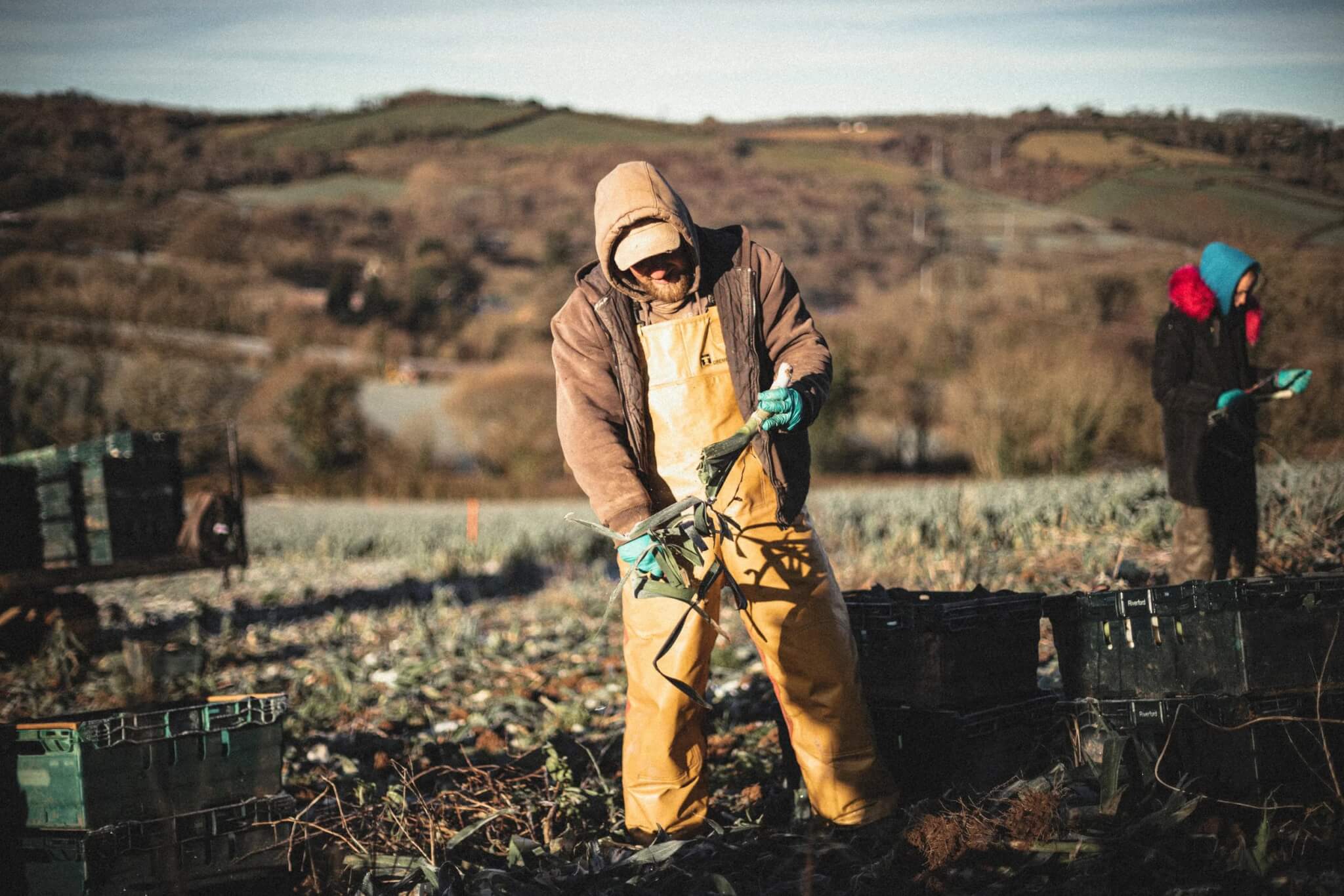In Four Fish, published in 2010, Paul Greenberg demonstrates how cod, salmon, bass, and tuna came to dominate Western diets — and the oceans themselves. In the UK, despite campaigns against overfishing, strict cod and haddock quotas, and the rise of Marine Stewardship Council (MSC) certifications, a few species continue to hold sway over both the marketplace and our plates.
“For generations, the British population has seemed to favour just a handful of fish – cod, haddock, salmon, tuna and prawns, which make up the majority of seafood eaten in the UK,” says Jack Stein, chef-director of Rick Stein Restaurants. “Whilst we have huge respect for our fishermen and the incredible work they do, as a country we haven’t always embraced the full variety of what they’re catching and what our seas have to offer, and it’s taken time to change those habits.”
At restaurants around the UK, chefs are finally making the most of underappreciated species once dismissed as bycatch. At Timberyard in Edinburgh, Atlantic wolffish and deep sea perch (also known as north eastern Atlantic red fish) are increasingly appearing on the menu. At Behind in London, Andy Beynon works with grey mullet and kippers, and at Nathan Outlaw’s Fish Kitchen in Port Isaac, Cornwall, you’ll find gurnard, megrim and even ling – a long, eel-like, fish that can be found in deeper water.
According to Stein, his father Rick Stein and Keith Lloyd had begun challenging conventions in the late eighties, with Jamie Oliver and Hugh Fearnley-Whittingstall continuing to carry that torch. “They helped us see the potential in lesser-known species,” he says, but “the truth is, we need to build a stronger domestic market for these fish.”
Monkfish is an example of this. It was once considered almost worthless, and is now highly sought-after and one of the most expensive fish in the country. “There’s no reason the same can’t happen with species like pouting, whiting, and dab,” he suggests. “They’re delicious, sustainable, and abundant in our waters, we just need to create some excitement around them.”
For Stein, giving voice to fishermen is instrumental in changing the fortunes of obscure fish. “Our fishermen risk their lives to bring us these incredible ingredients,” he says, “and we should be telling their stories, whether that’s through press, television, social media or simply by celebrating their catch on the plate.” For him, sustainability needs to be thought of more expansively than just reactively protecting fish stocks. He believes it is also about protecting fishing communities themselves, ensuring that their children and grandchildren have a future in the industry. “Supporting local, unsung species which can be responsibly caught,” he says, “helps sustain both the sea and the people who depend on it.”
For chef Nathan Outlaw in Cornwall, maritime biodiversity has always been a goal. “Very early in my career I realised there were serious issues around over-fishing of certain species, especially once I began talking directly to the fishermen,” he remarks. “As a result, I’ve always promoted the use of lesser used fish and seafood species. Now, more than ever it’s necessary to embrace those lesser-known species.”
Outlaw is currently working on a new recipe book (out in April 2026) that omits cod and tries to put a spotlight on many of the lesser-known species he’s used in his restaurant. “I think the message is beginning to get through,” he says, “and the public, in general, is beginning to understand this and embrace species they are not familiar with.”
Bart Stratfold, executive chef of Timbeyard, says “restaurants get people familiar with new ingredients.” Conversely, “if you were at the fishmonger, you may be walking in a bit blind, but staff at the restaurant are diligent in explaining produce. This gives diners confidence in the product which would then hopefully translate into them buying differently.”
At Behind in London, chef Andy Beynon leaves diners with no choice but to enter unchartered waters – with the restaurant exploring what is the best of the seas and oceans. “When diners don’t have a choice, such as at a tasting menu restaurant, it is the restaurant’s job to explain and educate,” Beynon explains. “Yes, we do serve luxury products such as shellfish, but this is a good incentive to also incorporate some more underappreciated fish alongside more recognisable products. This keeps guests interested and excited.”
But it isn’t simply a matter of twisting customers’ arms. The good news is that many of these fish offer something gastronomically novel. “I think that grey mullet can rival wild sea bass,” says Beynon. “The taste is earthy and slightly nutty.” He also feels kippers are “so under-appreciated, and have the most amazing depth of flavour.” For Stratfold, Atlantic red fish can rival red mullet, his favourite fish. “It’s one of the best white fish with sweet meat as the cold water means that it has high fat content,” he says. “It’s also more affordable because it’s less well known.”
For Outlaw, though fine dining can play its part, it’s important to note that “our cut of the consumer market is relatively small.” A bigger challenge remains regular access to such produce. “Unfortunately, for most people, the everyday fish counters are now few and far between,” he explains. “I think the best way to buy nowadays, unless you’re local to the coast, is from online fishmongers like Rockfish and The Cornish Fishmonger who work together with the fishermen and can give customers the information they need along with the best quality product.”
In addition to running a zero-waste policy, Rockfish’s sustainability ethos means pushing species like Craster kippers and other lesser-known species directly to home cooks. “We’ve always believed there’s a fantastic variety of fish in our local waters that just don’t get the attention they deserve,” says Mitch Tonks, CEO of the group. “Local species like coley, ling, and trout are not only sustainable options, they’re also incredibly versatile and delicious. They often have fewer environmental pressures and a lower carbon footprint.” The challenge for home cooks however, is in knowing what to do with them. “That’s where we come in,” he says.
“People are naturally curious – they want to try something new, especially when it’s from a trusted source. But a lot of home cooks do need that extra guidance.” Rockfish provides recipe ideas, cooking tips, and even video tutorials. “Once someone sees how easy it is to cook a coley fillet or ling, their confidence grows. It’s all about removing the fear factor and making seafood accessible, not intimidating.”
Rockfish – and other suppliers – can play a key and different role in broadening the nation’s seafood diet, alongside restaurants and supermarkets. “Online markets like Rockfish Online Seafood Market offer a different way to explore seafood,” Tonks says, “we can provide variety, sustainability, and guidance all in one place. We can reach people directly, help them gain confidence with new species, and make it easy to enjoy seafood at home.”
Whilst more work needs to be done to diversify the top restaurants, the work of top seafood chefs and smaller suppliers appear to be spreading. Waitrose has seen a 20 per cent increase in the sale of ray wings over the last year, as well as a 9 per cent increase on No.1 Craster Kippers in the last 3 months – with recipe searches for these on Waitrose.com also going up.
“Our counters are becoming a destination for customers seeking out more unique and ‘forgotten’ fish this season, from ray wings to smoked kippers,” Beth Jacobs, Fish Product Developer at Waitrose explains. “The counters in store provide an opportunity to make these cuts much more accessible to customers, with our Partners able to offer their expert guidance, advice, and cooking inspiration. This growing interest aligns with a wider consumer trend towards adventurous cooking and mindful waste reduction.”
So will ray wings be the next monkfish, or can we expect a broader appreciation of the diverse fruits the seas have to offer?
Whilst it’s hard to place a bet on what’s currently underused and likely to explode, “as people cook more fish and become more confident to cook, they will naturally want to cook different species to be more adventurous,” Outlaw says. He emphasises the importance of getting reliable, up-to-date information from fishmongers — both in person and online — before buying. Fishing stocks fluctuate constantly with season and location, he notes, so checking each time ensures that consumers can enjoy their fish while leaving other species a chance to recover. “That way you know you can enjoy your fish and be happy that it’s sustainable,” he says.
But is there still a risk that the “fish of tomorrow” could become overfished if demand grows too quickly? For Stratfold, that is something to be vigilant about. “It’s a problem that comes with hype,” he says. “We as a country can’t seem to do anything in moderation and tend to go mad for products that we love – hence fish like turbot are selling for £62 a kilo.” Beynon suggests that pricing fish dynamically will ensure this doesn’t happen. “The more overfished, the higher the price,” he explains.
For Stratfold, the answer may lie in enforcing seasonal fishing, and introducing slot limits that put more responsibility on fisheries to catch fish of a certain size. “By committing to cycles,” he says, “we can ensure that we have good quality products for years to come.”










0 Comments